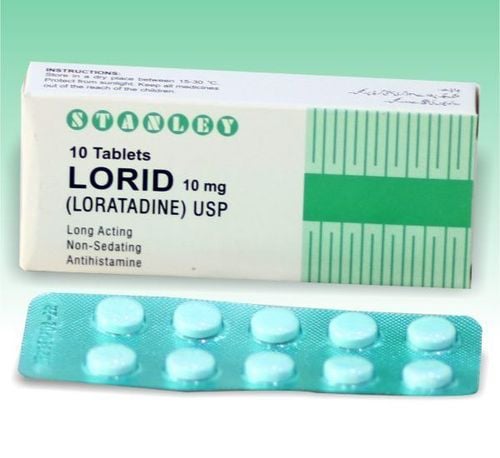This is an automatically translated article.
Meat, fish is one of the foods rich in protein that is essential for the development of children. However, many children refuse to eat meat and often show fear and cry when eating. So the baby does not eat fish meat, should be worried? And what to do if the baby doesn't eat fish? Let's refer to an article below for effective solutions to help children love eating fish.
1. The reason why the baby refuses to eat fish?
Many parents wonder: Why does my child not like to eat meat and fish but prefers to eat rice and soup. Is it due to a mistake from the way of eating? How to get children to eat enough, especially to eat meat and fish?
When starting to transition from breastfeeding to solid food, it is very normal for babies to refuse to eat fish at first. If your child refuses to eat, adults shouldn't jump to conclusions that he doesn't like it. Parents need to patiently help children and create favorable conditions for children to form habits combined with "experience" the exciting feeling of being satisfied with hunger and satisfying the need for satiety. Normally, mothers should teach their children the taste of meat and fish from the time they are 6 months old, then the baby's stomach will secrete enough gastric juice to be able to digest protein-rich foods. However, mothers also need to pay attention to practice eating fish for children to gradually get used to it in two stages:
Stage 1: During the time the child is 6 - 8 months old, most babies have just grown about 1-2 teeth, even children with delayed teething have yet to erupt any teeth. Therefore, mothers should practice giving their children easy-to-digest foods including condensed milk products such as yogurt, cheese, boiled eggs; white meat such as: chicken breast, fish fillet (remove bones thoroughly).
Food needs to be pureed, but the use of a blender should be minimized. Because if you add water, the food will become too liquid and thin, the child cannot feel and distinguish the new foods. Mixing foods should also be avoided, but should try to introduce each type separately to the child.
Stage 2 (from 8 to 10 months old): Mothers should introduce children to more diverse types of meat, red meats such as pork and beef. Each meal of solid food should not exceed 35g of meat equivalent to 1 egg.
Another reason is that parents think meat and fish are good, so they should give their children a lot of food at the first time when they learn weaning and do not change the food for their children, making them afraid and obsessed with eating. continuously one type of food. Another mistake is that the mother who prepares weaning food for her child does not ensure the necessary coarseness in accordance with the age. For example, a child is just starting to eat solid foods, but the mother has prepared a pork dish while the child's need is still pure food. That is why children are afraid of fish meat.
As for older children, parents do not practice eating for children from a young age, so older monkeys will form a habit of "lazy chewing", leading to the baby refusing to eat meat

Giải đáp bé không ăn thịt cá phải làm sao?
2. Baby does not eat fish, should be worried?
In the process of raising children, many mothers wonder when is the most appropriate time to add meat to their baby? How much food is good for children to eat? If eating too much meat will affect the baby's health? Obviously, these concerns are completely grounded because the child's digestive system is still immature and cannot meet the same amount of meat as an adult.
Ideally, it is for children to eat a balanced diet that ensures 4 basic groups of substances: starch - protein - fat - vitamins and minerals. But not every child cooperates, and every parent is wise enough to do so.
Meat and fish are extremely important food sources for children. They provide a very good source of animal protein and there are no substitutes. You need to observe when feeding your children fish and meat, explore many new dishes, and persevere in exercising them. If your child still refuses, don't worry, reduce the amount of meat and increase the amount of vegetables.
If the baby refuses to eat meat, the mother can stop for a short time, if the baby will eat shrimp, fish, eggs, beans, milk... then temporarily supplement protein sources from these foods, then give them a meal. Baby eats meat again slowly, little by little. Parents can't be hasty in feeding their children fish and meat and cramming and forcing children to eat will only make the situation worse, the more afraid the child will be.

Mẹ có thể chế biến nấu lẫn thịt, cá vào món canh ưa thích của bé
3. What should children do not eat fish meat?
In order to help children easily eat fish meat and ensure the nutrition inside fish meat, mothers should choose some of the following processing methods:
If children are afraid to eat meat because they are not ready with the rawness of meat. due to sloppy pork or residue... the mother needs to review how to process flour/porridge for the baby. Initially, please puree the meat to cook with flour/porridge, then gradually increase the coarseness of the meat/fish such as changing from pureed to finely minced, then minced, minced meat and pork... If the baby is ready to eat raw, the baby will not be afraid of "eating meat" anymore. Absolutely do not force children to eat when they do not want in any way. Feed the child at the right time, when the child is hungry, (wash hands and feet before feeding if the child has just finished playing...) Presenting attractive, eye-catching dishes in color, at an appropriate temperature Suitable for food or baby's taste. Do not let the children see the meat and fish dishes clearly, but instead, combine the fish meat with herbs to form good dishes or grow balls for children such as tomatoes, gourds, squash stuffed with meat or fish, maybe add tofu, mushrooms; Fried rice, mixed fried vegetables with meat, chopped fish... If your child prefers to eat soup and vegetables over fish meat, you can cook it with meat and fish in your child's favorite soup such as: "raw" spinach soup. ", bitter melon soup stuffed with tofu and meat, sour fish soup with strabismus, jute or spinach soup, melon cooked with crab, tomato tofu soup with eggs... can still add enough meat, fish for children at the age of starting school. The best way to help your baby like to eat meat and fish is to combine with vegetables, meat and fish will be eaten according to the attractive flavors of vegetables. For example: tomatoes, gourds, squash stuffed with meat or fish, can add tofu, mushrooms; fried rice, mixed fried vegetables with meat, chopped fish... Some children are afraid to eat fish meat because the mother has not prepared it thoroughly, the fish meat still has a fishy or foul smell. Ideally, mother should choose fresh fish for processing and deodorizing fishy with the following way: Boil a pot of water, add 1 teaspoon of salt, then blanch the fish in boiled salt water to remove the fishy smell. For the meat, the mother boiled it briefly to deodorize or washed it with rice water, ginger or vinegar so that the bad smell from the meat was gone. It is necessary to create a happy atmosphere with people who love children to encourage them to eat well. The mother or the adult eating with the child should not show stress, worry, scold or force the child to eat, take the spoon with the child to run around to feed... Nor should "excessive indulgence" to lure Children eating (such as turning on the TV to watch before eating, or doing tricks...) will create bad habits in eating, gradually causing disadvantages in all aspects. Things not to do when preparing fish for babies
Mothers please make sure that your baby only eats fully cooked fish meat. Stay away from cold cuts, bacon, and hot dogs. According to a 2008 analysis, these meats were packed with preservatives and contained only 5.7% of the actual meat. Avoid fish that are high in mercury. Do not fry or fry meat with a lot of fat. Do not reheat fish meat more than once. Note that foods when combined together can produce toxins that are harmful to your baby's health. Do not leave leftovers in the refrigerator for more than 2 hours. Let each child's meal be a new experience, not an eternal forced-eating song! This improvement can take a long time, so parents are advised to stay calm and persistent. In addition, parents can supplement nutrients for their children, even through eating or functional foods. In particular, the use of functional foods should choose those of natural origin that are easily absorbed, do not allow simultaneous use of many types or continuously change the types of functional foods.
Parents should supplement their children with supporting products containing lysine, essential micro-minerals and vitamins such as zinc, chromium, selenium, B vitamins to help fully meet the nutritional needs of children. At the same time, these essential vitamins also support digestion, enhance nutrient absorption, help improve anorexia, and help children eat well. Parents can simultaneously apply dietary supplements and functional foods derived from nature for easy absorption. The most important thing is that improving your baby's symptoms often takes a long time. Combining many types of functional foods at the same time or changing many types in a short time can make the baby's digestive system unable to adapt and completely not good. Therefore, parents must be really patient with their children and regularly visit the website vimec.com to update useful baby care information.













